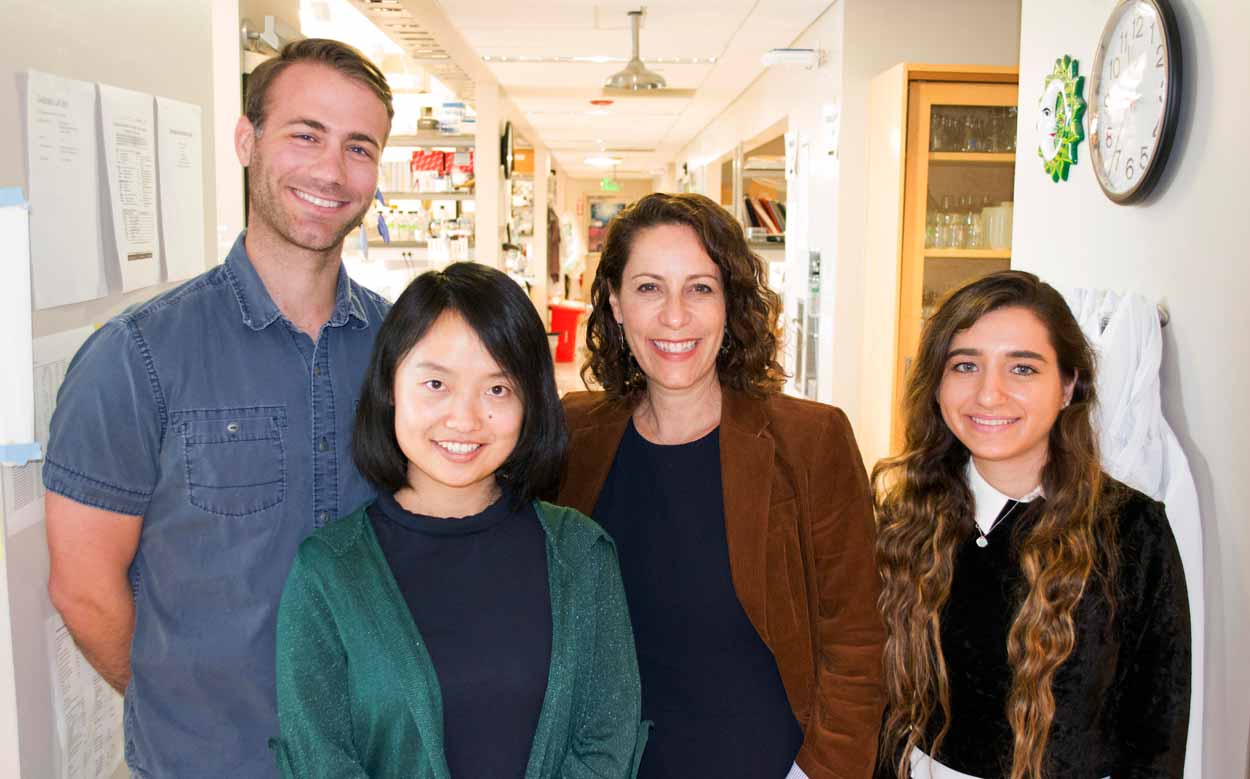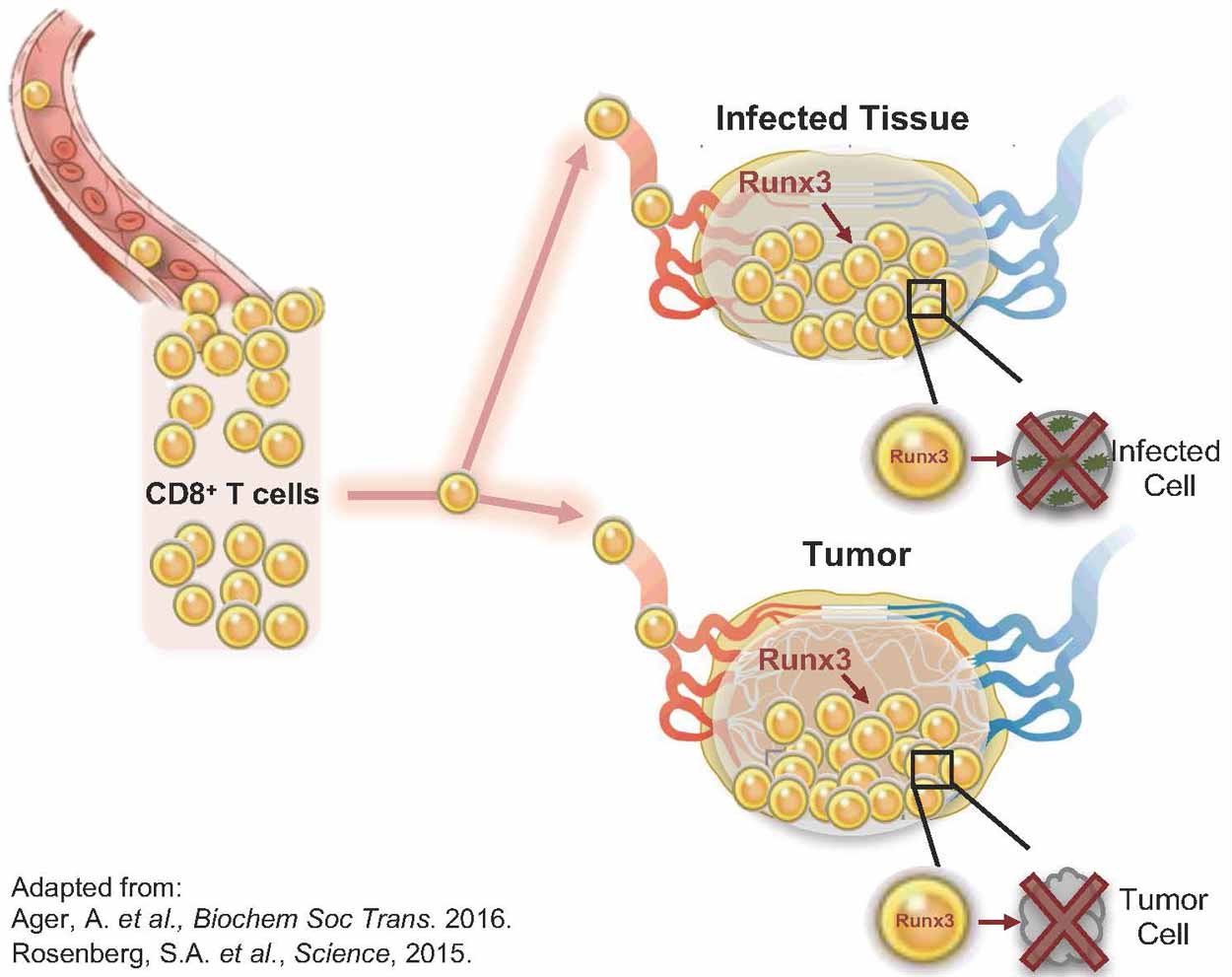Scientists Identify Promising New Approach for Immune System Defense against Cancer
Team finds ‘Runx3’ programs T cells to amass in tissues where they protect against infection and tumor growth, opening the door to potential new cancer therapies
December 11, 2017
By Mario C. Aguilera

Nature paper coauthors (left to right) Justin Milner, Bingfei Yu, Ananda Goldrath and Clara Toma.
Looking to bolster the body’s immune system in the fight against infection and cancer, researchers at the University of California San Diego and their colleagues have identified a promising new strategy to program the immune system to meet the pathogen or malignancy in the tissues where they first pose a threat.
A multidisciplinary team led by Justin Milner, a postdoctoral researcher in molecular biologist Ananda Goldrath’s laboratory, uncovered a novel function for a protein known as “Runx3” that is key to the development of killer T cells—immune cells important for fighting infections and cancer. The researchers discovered similarities shared by T cells in infected tissues and tumors, and leveraged this finding to enhance killer T cell abundance in tumors, which was driven by Runx3.
Their study is published in the Dec. 14 edition of the journal Nature.
“At this time, we are seeing great promise in treating cancer stemming from approaches that exploit the immune system to target tumor cells and our work describes a new tool for directing the immune system into the right place where it can do its job,” said Goldrath, the chair of the Section of Molecular Biology in the Division of Biological Sciences.

The protein Runx3 programs killer T cells to target infected tissues and tumors.
Runx3 has been known for its contributions to immune cell development but the researchers found a new therapeutic role for it. Their research in mice demonstrated Runx3 could program killer T cells to locate to and persist in infected tissues or tumors, helping to eradicate infections or slow growth of malignancies.
“We uncovered an unappreciated function for this molecule in setting up a frontline of defense in tissues throughout the body,” said Goldrath. “It’s really a repurposing of a protein used in development to regulate the functional properties of the immune system.”
The researchers believe Runx3, if properly directed, could be combined with other approaches to help T cells recognize and destroy tumor cells and enhance vaccine efficacy.
The collaborative project spearheaded with Matthew Pipkin at The Scripps Research Institute (Florida) included undergraduates, graduate students, postdoctoral researchers as well as long- standing collaborative efforts with Shane Crotty at the La Jolla Institute for Allergy and Immunology and Wei Wang in UC San Diego’s Department of Chemistry and Biochemistry.
Other coauthors of the study included Clara Toma, Bingfei Yu, Kai Zhang, Kyla Omilusik, Anthony Phan, Dapeng Wang, Adam Getzler and Toan Nguyen.
The research was supported by the UC San Diego Molecular Biology Cancer Fellowship, the U.S. National Institutes of Health (U19AI109976), the California Institute for Regenerative Medicine (RB5-07012), the Kimmelman Family Foundation and the San Diego Center for Precision Immunotherapy.
